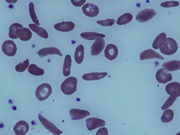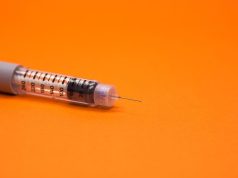Lower rate of crises per year; longer median time to first, second crises with high-dose therapy
MONDAY, Dec. 5, 2016 (HealthDay News) — High-dose crizanlizumab treatment is associated with a significantly lower rate of sickle cell-related pain crises than placebo, according to a study published online Dec. 3 in The New England Journal of Medicine to coincide with the annual meeting of the American Society of Hematology, held from Dec. 3 to 6 in San Diego.
Kenneth I. Ataga, M.B.B.S., from the University of North Carolina at Chapel Hill, and colleagues conducted a phase 2 trial involving patients with sickle cell disease who were randomized to receive low-dose crizanlizumab, high-dose crizanlizumab, or placebo administered intravenously over a period of 52 weeks. A total of 198 patients at 60 sites underwent randomization.
The researchers found that the median rate of crises per year was 1.63 and 2.98 for high-dose crizanlizumab versus placebo, respectively. The median time to the first crisis and to the second crisis was significantly longer with high-dose crizanlizumab therapy than placebo (4.07 versus 1.38 months and 10.32 versus 5.09 months). The median rate of uncomplicated crises per year was 1.08 and 2.91 for high-dose crizanlizumab versus placebo, respectively.
“In patients with sickle cell disease, crizanlizumab therapy resulted in a significantly lower rate of sickle cell-related pain crises than placebo and was associated with a low incidence of adverse events,” the authors write.
The study was funded by Selexys Pharmaceuticals.
Copyright © 2016 HealthDay. All rights reserved.








